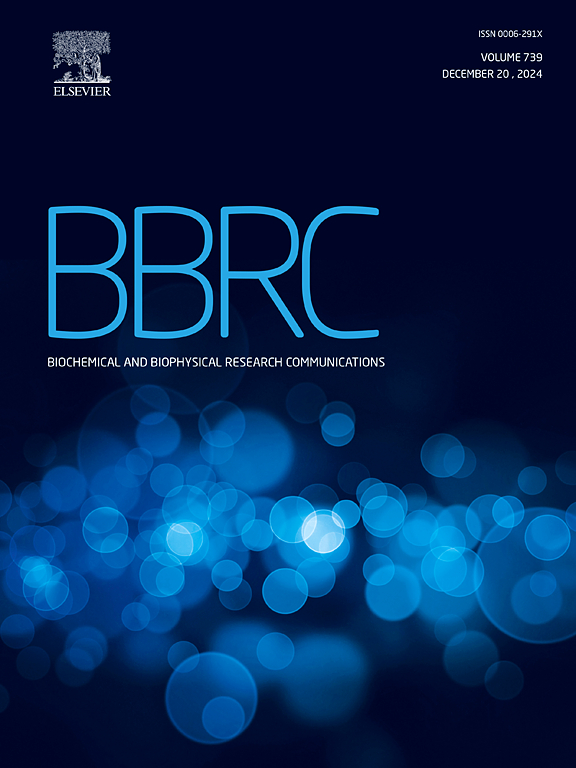Cell surface display of a protein based on a tail-anchored membrane protein
IF 2.5
3区 生物学
Q3 BIOCHEMISTRY & MOLECULAR BIOLOGY
Biochemical and biophysical research communications
Pub Date : 2025-04-01
DOI:10.1016/j.bbrc.2025.151738
引用次数: 0
Abstract
Methods for displaying proteins on the cell surface are widely used in protein-based biotechnology and bioengineering, where target proteins are expressed as fusion constructs with membrane proteins through recombinant DNA technology. In this study, we developed a system for displaying a protein on the cell surface using the transmembrane domain (TMD) of a tail-anchored membrane protein (TA protein). TA proteins have an orientation in the cell membrane such that their C-termini are displayed on the cell surface, which contrasts with that of type I transmembrane proteins that are commonly used as anchoring units. Therefore, by utilizing the TMD of a TA protein as an anchoring unit, desired proteins can be attached to the TMD via their N-termini. This approach is advantageous for displaying proteins whose C-terminal regions play important roles in their activity. In this study, we chose the inner nuclear membrane protein emerin as a TA protein and constructed expression systems in mammalian cells for a series of fusion proteins based on deleted forms of emerin. We found that utilizing emerin that lacks 210 residues from the N-terminus as a TMD allowed efficient translocation of the fusion protein to the plasma membrane, successfully displaying its target protein portion on the cell surface. Thus, our system serves as an effective method for protein display, enhancing the applicability of cell surface display technology based on transmembrane proteins.

基于尾锚膜蛋白的细胞表面蛋白质展示
在细胞表面展示蛋白质的方法广泛应用于基于蛋白质的生物技术和生物工程中,目的蛋白通过重组DNA技术与膜蛋白融合表达。在这项研究中,我们开发了一种利用尾锚定膜蛋白(TA蛋白)的跨膜结构域(TMD)在细胞表面显示蛋白质的系统。TA蛋白在细胞膜中具有定向,其c端显示在细胞表面,这与通常用作锚定单元的I型跨膜蛋白形成对比。因此,通过利用TA蛋白的TMD作为锚定单元,所需的蛋白质可以通过它们的n端附着在TMD上。这种方法有利于展示c端区域在其活性中起重要作用的蛋白质。在这项研究中,我们选择了核膜蛋白emerin作为TA蛋白,并构建了一系列基于emerin缺失形式的融合蛋白在哺乳动物细胞中的表达系统。我们发现,利用n端缺乏210个残基的emerin作为TMD,可以使融合蛋白有效地易位到质膜上,成功地在细胞表面显示其靶蛋白部分。本系统为蛋白质展示提供了一种有效的方法,增强了基于跨膜蛋白的细胞表面展示技术的适用性。
本文章由计算机程序翻译,如有差异,请以英文原文为准。
求助全文
约1分钟内获得全文
求助全文
来源期刊
CiteScore
6.10
自引率
0.00%
发文量
1400
审稿时长
14 days
期刊介绍:
Biochemical and Biophysical Research Communications is the premier international journal devoted to the very rapid dissemination of timely and significant experimental results in diverse fields of biological research. The development of the "Breakthroughs and Views" section brings the minireview format to the journal, and issues often contain collections of special interest manuscripts. BBRC is published weekly (52 issues/year).Research Areas now include: Biochemistry; biophysics; cell biology; developmental biology; immunology
; molecular biology; neurobiology; plant biology and proteomics

 求助内容:
求助内容: 应助结果提醒方式:
应助结果提醒方式:


